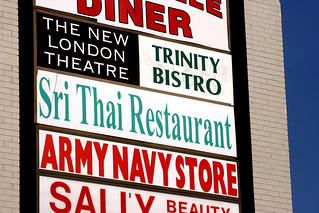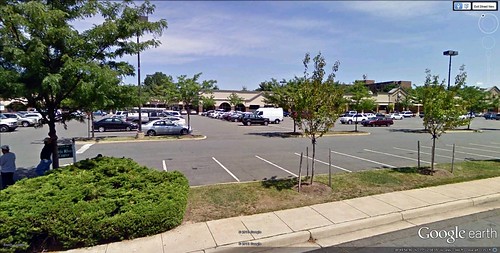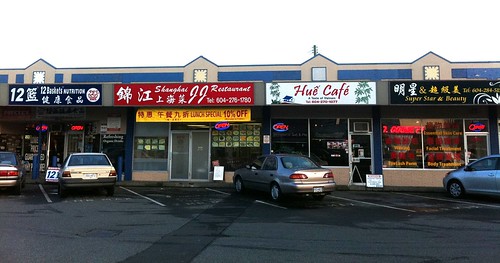As we remake suburbs, should we guard against "commercial gentrification"?

Posted June 11, 2013 at 1:26PM
There is little question that suburban strip malls represent an unsustainable architecture. Totally automobile-dependent, marked by large surface parking lots, and remarkably inefficient at using land, strip malls generate much more pollution and consume much more in the way of resources on a per capita basis than do more walkable, urban shopping districts. Such urbanist thinkers as Galina Tachieva (Sprawl Repair Manual), June Williamson and Ellen Dunham-Jones (Retrofitting Suburbia) are absolutely correct in urging that, as these malls age and decline, they should be replaced with better, greener forms.
Indeed, some of our best and most iconic smart growth developments – The Crossings in Mountain View, California, and Mizner Park in Boca Raton, Florida come immediately to mind – were built on what were once dead shopping malls. Late 20th-century commercial buildings typically have much shorter life spans than do homes, so remaking these old parking lots and typically single-level stores represents one of our best hopes for achieving a greener suburban future.
And yet: As these properties have declined, so have their rents, making them affordable to small, often entrepreneurial businesses. Particularly as immigrants have settled in inner suburbs (where many of these fading commercial strips are), businesses owned and patronized by the immigrant population have occupied many of these spaces, in some cases alongside small start-ups owned by longtime community residents as well.
 The risk is that, as we reshape these old properties with new buildings and concepts, the replacement properties will be much more valuable than their predecessors; indeed, that’s why new development is appealing to investors and how it is made possible. Overall, that’s a good thing. But small businesses either go under, unable to afford new rents, or relocate as a result. The logical place to relocate in many cases will be vacant storefronts in other strip malls in locations less attractive to the businesses' clienteles. What to do?
The risk is that, as we reshape these old properties with new buildings and concepts, the replacement properties will be much more valuable than their predecessors; indeed, that’s why new development is appealing to investors and how it is made possible. Overall, that’s a good thing. But small businesses either go under, unable to afford new rents, or relocate as a result. The logical place to relocate in many cases will be vacant storefronts in other strip malls in locations less attractive to the businesses' clienteles. What to do?
When we redevelop areas with low-income housing, we know what to do (which is not to say that we always do it): minimize displacement of residents, find new homes for those who must be displaced, and set aside properties in new development with affordable pricing to help make sure that a revitalizing neighborhood can retain diversity. An ethic has developed, in many cases adopted into law with inclusionary zoning.
But, as far as I know, there is no comparable, widely understood ethic to protect small, often minority businesses that are harmed by otherwise beneficial neighborhood change, and I am wondering whether there should be.
I recently visited my home town of Asheville, North Carolina, where there was an article in a local “alternative” weekly newspaper about small businesses that have sprung up in local strip malls. Julia Ritchey writes:
“Beyond the typical tanning salons, pawnshops and big-box stores, you will find other complexes that, like [local Korean restaurant] Stone Bowl’s,
feature small, independently owned businesses with a flair for the unique. Call it manifest destiny, suburban style. By being accessible, original and part of a diverse cluster of storefronts, these local establishments ensure that the American strip mall may continue to thrive in today's fickle economy . . .
“Strip malls offer business owners certain quality of life conditions not always available in thriving, popular downtown districts: affordable rents, ample parking and a relatively hassle-free start up. What a strip mall may lack in charm and architectural interest, it makes up for in value.”
According to Ritchey’s article, Asheville’s strip malls offer a setting for synergies to develop and help connect entreprenurial businesses to each other: for example, establishments offering diverse but complementary products and services can share a customer base, trade ideas, and cross-promote. This strikes me as analogous in some ways to synergies available to start-ups in more urban “business incubators.”
It makes a lot of sense to me and, in many parts of the country, it is newer Americans who are benefitting the most from these opportunities. For them, a successful business in a strip mall is the American Dream at work. Three years ago, Aaron Renn (The Urbanophile) and I wrote separate articles (mine; Aaron’s) about a sort of organic economic revitalization being initiated by immigrants within the existing fabric of our older suburbs.
There is no doubt that today’s suburbs are more diverse than they used to be. As of 2009, 44 percent of elementary school students in suburban Fairfax County, Virginia - outside of Washington, DC - spoke a language other than English at home. Although Spanish is the second most common language (after English) spoken at home by Fairfax students, fully half of the county’s immigrant population is from Asia.
Fairfax remains one of America’s wealthiest counties (its rank fluctuates year to year but is always in the top five nationally), and a drive down any of its main drags is a drive through seemingly endless strip malls, many of them with Asian, Spanish, and Indian language signs marking the businesses within. As these aging malls are gradually replaced – and many of them will be in the next decade – what will become of these small businesses?
By the way, I don’t mean to suggest that the problem of commercial gentrification is inherently suburban. It is plainly not. Nor is redevelopment entirely to blame for the loss of small businesses, either in inner cities or in strip malls. Larger economic forces have been driving mom-and-pops out of business for decades.
But I do think there has been a resurgence of entrepreneurship in recent years. It is taking place in older commercial buildings with lower rents and, increasingly, that means it is taking place in some locations we may be quick to dismiss as car-dependent and unsustainable. While surely the best way to preserve small business diversity and opportunity is not to preserve some of the most unsustainable architecture in America, my sense is that we – environmentalists and urbanists – have not put enough thought into how best to sustain what that architecture is now nurturing.
Related posts:
- How retrofitting a California suburb for walkability is spurring economic development (January 4, 2013)
- How to retrofit failing suburban big-box stores into a green showcase (March 12, 2012)
- Can this dead suburban mall be transformed into something better? It's complicated. (June 13, 2011)
- The country's best suburban retrofit: Bethesda Row reaches maturity (January 28, 2010)
- The big-box ghosts of shopping past (December 18, 2009)
- As we lose shopping malls, are we losing something sacred? (December 2, 2009)
- Strip shopping center vacancies at 17-year high (October 12, 2009)
Move your cursor over the images for credit information.

